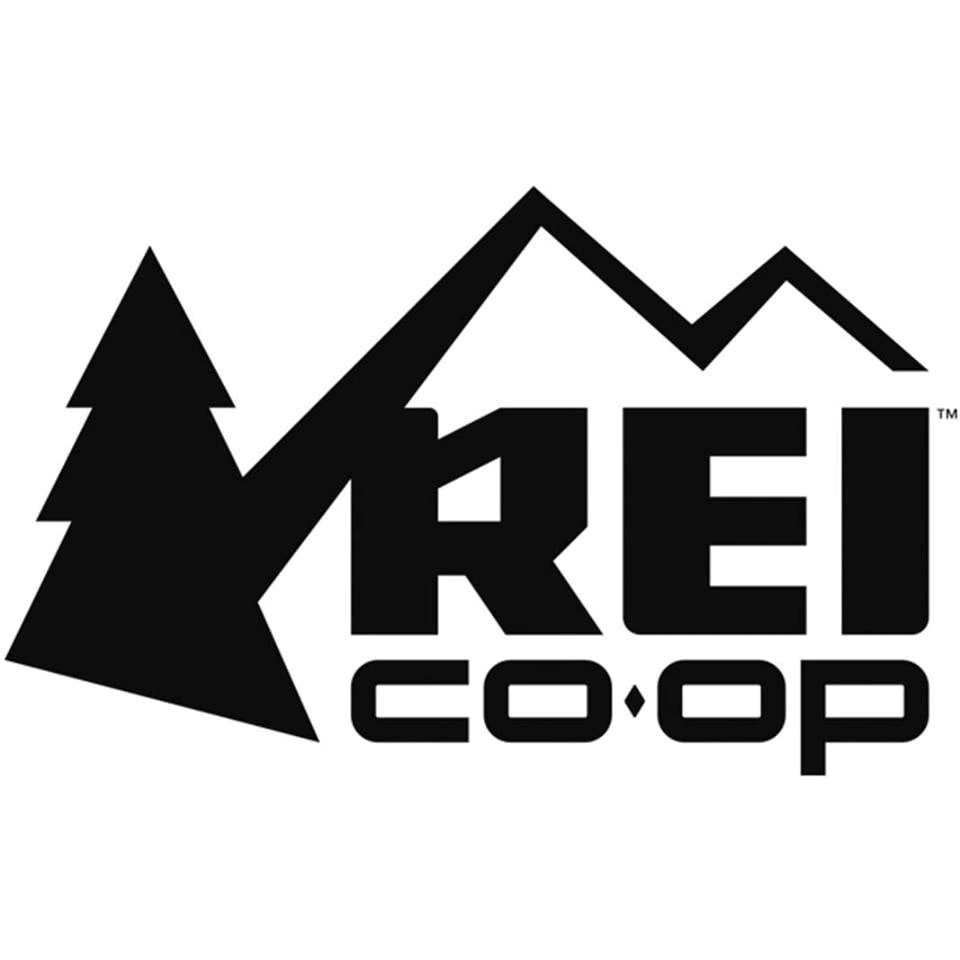If you want to put together the ultimate layering system, then start by focusing on the foundation of that system—your underwear (aka "base layer"). Comfort in the outdoors starts with the layer that touches your skin.
You have three key considerations in choosing a base layer:
- Material type: Fabric is your most important decision. Whether you go with a synthetic like polyester or a natural one like wool or blends, you need it to wick well (move sweat off your skin).
- Base layer weight: Your choices are typically ultralightweight, lightweight, midweight or heavyweight, with thicker fabrics laying down extra warmth.
- Fit and features: A wicking fabric has to be in direct contact with your skin to do its job, so you want a snug fit. Other features include thumbholes or partial zips.
Shop Base Layers & Long Underwear
If you're new to the layering game, you should also read Layering Basics.
Underwear Fabrics
As long as a garment was designed to be a base layer, you can assume that its fabric does a decent job of wicking moisture. If you don't have a strong preference already, then consider the following attributes of each type of base layer fabric:
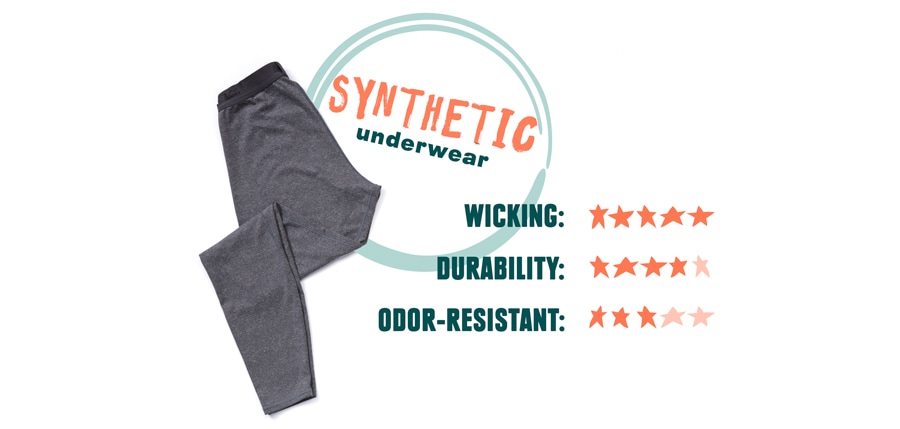
Synthetics
One of the most common synthetic fabrics for long underwear is polyester. You might also see nylon, polypropylene or rayon, or a blend of fabrics. Fabrics that include spandex offer comfortable stretch and can fit snugly without feeling constrictive. Synthetics have the following characteristics:
- Super dry: Synthetics excel at wicking and dissipating sweat, so they give you the driest feel of any type of fabric.
- Durable: No base layer is invincible; if you're looking for your most durable option, though, then synthetics are your best bet.
- Odor retention: Some synthetics add a finish that inhibits the buildup of odor-causing bacteria, which helps. If you'll be going multiple days between washes, it helps to have some tolerance for stinkiness.
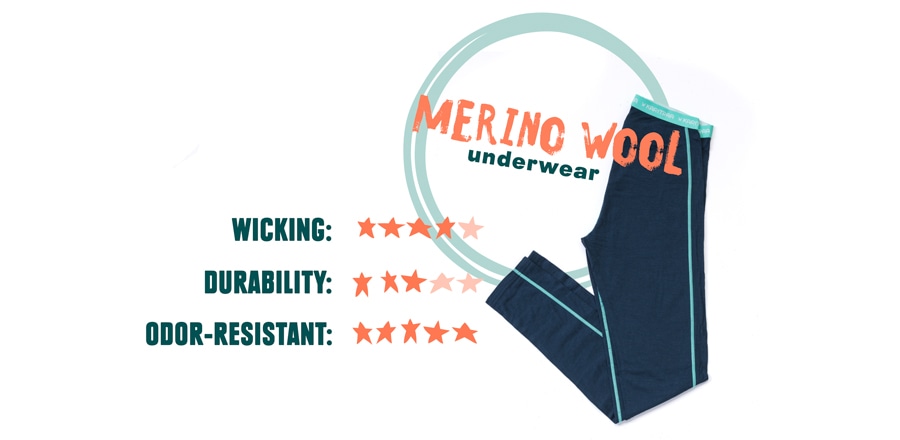
Merino Wool
This is not your grandparents' itchy woolies. Merino wool has almost completely replaced traditional wool thanks to its soft, ultrafine fibers. (Learn more about merino wool.) Wool can also be blended with other fabrics, like spandex to enhance fit and flexibility. Merino wool has the following characteristics:
- Wicks well: Some moisture in wool is retained in its core, which won't chill you, but wool will not feel quite as dry as a synthetic fabric. It will also take longer to dry when it gets wet.
- Cools, too: That moisture in the core of its fibers releases when temps heat up, which can offer a little bit of cooling in warm weather.
- Moderately durable: Wear it under other layers and enjoy a long and happy life together; as a standalone top under heavy pack straps, it won't last as long because the constant rubbing can wear through the fabric. You can also opt for a base layer that blends synthetic and wool for increased durability.
- Odor free: Even if you don't believe wool fanatics who report endless days of sweaty wear without a discouraging whiff, it's absolutely true that wool is highly resistant (and naturally resistant) to odor-causing bacteria.
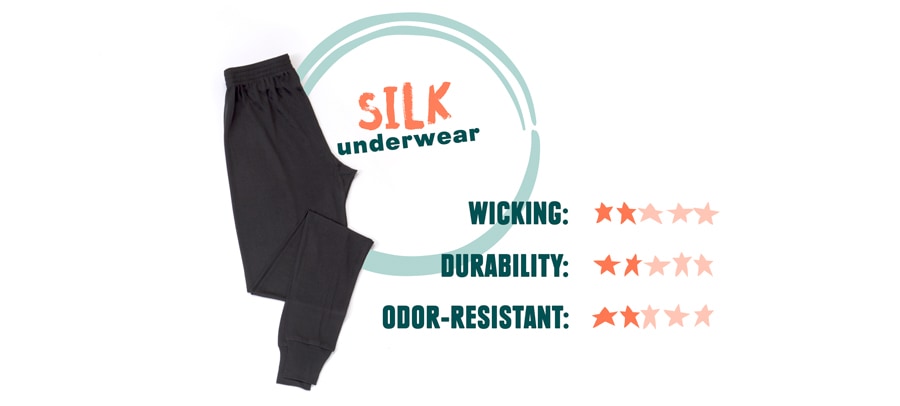
Silk
Silk's legendary softness belies the fact that it's a viable base layer option for low-key activities, like an easygoing fall hike or an evening concert outdoors. Silk has the following characteristics:
- Moderate wicking: If you don't push your heart rate out of your target zone, you should be fine; some silk underwear has an added finish to improve wicking.
- Suppleness: Invariably available as a lightweight option, silk slips easily under other layers; the flipside is that it's not especially durable.
- Odor retention: Silk is not naturally odor resistant, so it needs to be laundered every time you wear it.
Ceramic/Wool
Wool that's embedded with ceramic particles is an emerging technology in base layers designed specifically for hot weather. The ceramic attracts body heat, then dissipates that heat quickly to help cool your skin.
Underwear Weight
You don't have to overthink this, but you do need to consider both your metabolism and activity level. If you're always "the cold one" in your group, then go with a heavier weight. If you're training for the Olympic Nordic ski team, then go with a lighter weight.
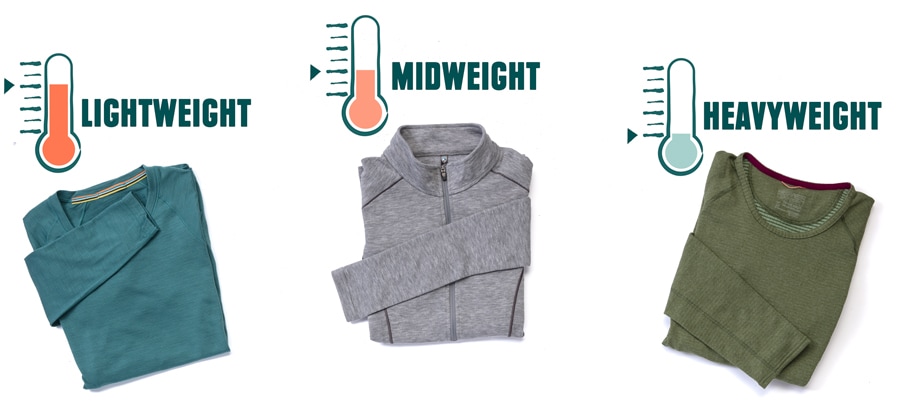
Here are your three basic weight options for long underwear:
- Lightweight base layers: Moderate to cool temps.
- Midweight base layers: Cold temps.
- Heavyweight base layers: Below-freezing temps.
You might also see "ultralightweight" or "featherweight" or other similarly gossamer descriptors. Those happen when brands try to push the envelope on the light end of the fabric spectrum. On the heavier side of things, you might see alternative terms like "expedition weight."
Remember, too, that your base layer's main job is moisture management. Heavier base layers can certainly add some warmth, but it's your insulating middle layer that's the primary keeper of your body heat (not your base layer).
Underwear Fit
To be able to wick sweat efficiently, your next-to-skin layer needs to actually be next to your skin. So a comfortably snug fit everywhere is your goal. Don't rely solely on marketing terms like "athletic fit," though: Try it on to be sure.
Some people prefer a loose fit in a warm-weather base layer. Their logic is that they'll enjoy better air circulation and cooling. With a loose fit, though, you sacrifice wicking efficiency. In addition, some warm-weather base layers spread sweat out over a large surface area, which cools a large area when evaporation takes place.
Editor's Note: This article was reviewed and updated on Aug. 1, 2024.

